Special Report
The Most Dangerous Cars in America
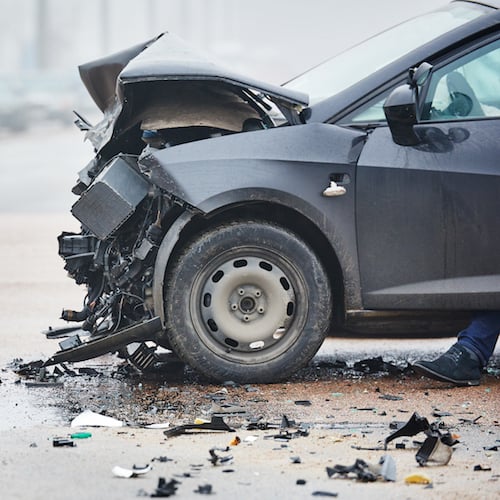
Published:
Last Updated:

The average light vehicle on the road today was manufactured in 2003 or 2004. While cars built today usually meet the highest of safety standards, there are a number of vehicles built more than a decade ago that are relatively unsafe.
To determine the most dangerous cars in America, 24/7 Wall St. reviewed crashworthiness evaluation results from the Insurance Institute for Highway Safety, a nonprofit research organization funded by auto insurers. The IIHS conducts a number of crash tests to determine how well a vehicle minimizes the possibility of injury for its occupants in a collision. While the IIHS has added several tests since, in the early 2000s, the nonprofit primarily tested frontal collision, broadside collision, roof strength, and head restraint and seat safety.
[in-text-ad]
To compile America’s most dangerous cars, the model must have received a poor or “marginal” rating in either the frontal crash impact or side crash impact safety tests — frontal and side impact collisions are the most fatal. Additionally, a car must have also received a “poor” rating on either the roof strength test, which simulates a vehicle rollover, or the head restraint and seat test, which simulates a rear-end collision. As we are only looking for vehicles that are still likely driven on the roads today, we only reviewed generations of cars which included the 2005 model year or later.
Click here to see the 12 most dangerous cars.
The safest cars tend to be the largest. In a frontal car collision, the heavier the oncoming car is and the shorter the distance between the occupant and the front of the car, the higher likelihood of injury. Smaller, lighter cars carry a greater risk of injury, as occupants will experience greater force in a collision. In 2014, there were 55 driver deaths in subcompact cars per million registered vehicles, a far higher driver death rate than the 19 fatalities in very large cars per million registered vehicles.
Safety is an important consideration when buying a car for many Americans. Of the top 10 best selling cars today, eight are top-safety IIHS picks. For many of the cars on this list, low safety ratings may have hurt their popularity among U.S. consumers and ultimately led to their discontinuation. Of the 13 most dangerous cars, five have been discontinued in the United States at some point.
The roads are much safer today than they were a decade ago. Passenger vehicle deaths fell from 21,952 in 2004 to 15,479 in 2014. This statistic is even more impressive when considering that there are many more drivers today. Over that same 10-year period, driver deaths fell from 117 per million registered vehicles to just 44.
While improvements in road infrastructure likely partially contributed to this increased safety, the reduction in fatalities was largely driven by manufacturers building safer cars, according to the IIHS.
The overall improvement auto industry safety is apparent when considering that most of the cars on this list are about a decade old. The vast majority were sold in the 2005 or 2006 model years. The most recently produced generation of car on this list is the 2006-2009 Kia Rio.
In the mid-2000s, the Hyundai Accent, Kia Rio, Nissan Sentra, and others failed at least two of the four major tests conducted the IIHS. The 2016 models of each of these cars received “good” or “acceptable” ratings in all four categories. The Sentra rated as one of the IIHS’s top safety picks.
Click here to read our methodology.
These are the most dangerous cars in America.
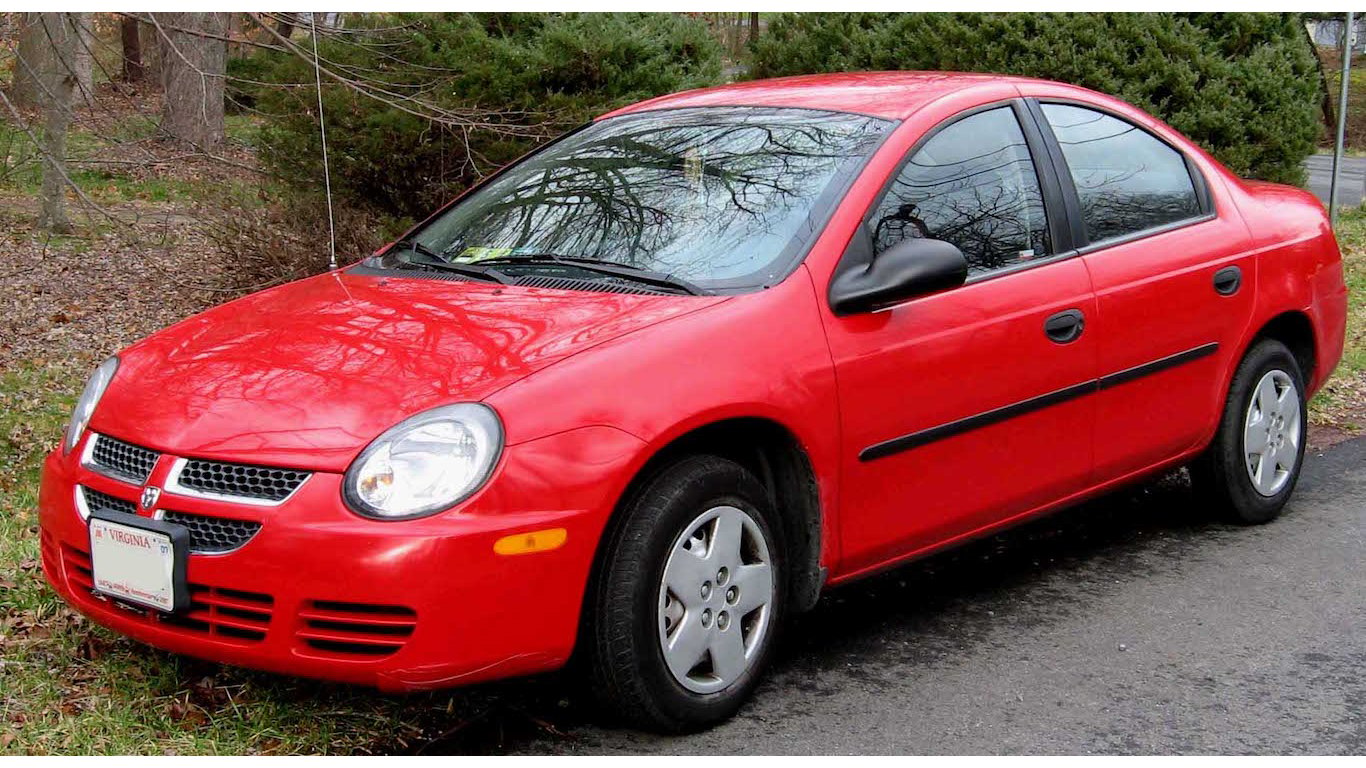
1. 2000-2005 Neon
> Make: Dodge
> Poor ratings: Side, head restraints & seats
> Model discontinued: Yes
> Type: Sedan
The second and final generation of the Dodge Neon began with the 2000 model year. While the second generation has a better frontal crash rating than the first generation, it still received a poor score for its side crash impact and headrest safety. More than 160 drivers of small 4-door Dodge Neons were killed per million registered vehicles annually between 2002 and 2005, one of the highest driver death rates of any car at that time. In a 2005 IIHS report, current president Adrian Lund said, “if safety is a priority, the Neon is a small car to be avoided.” The Dodge Neon was discontinued after the 2005 model year, though thousands likely remain on the road today.
[in-text-ad]
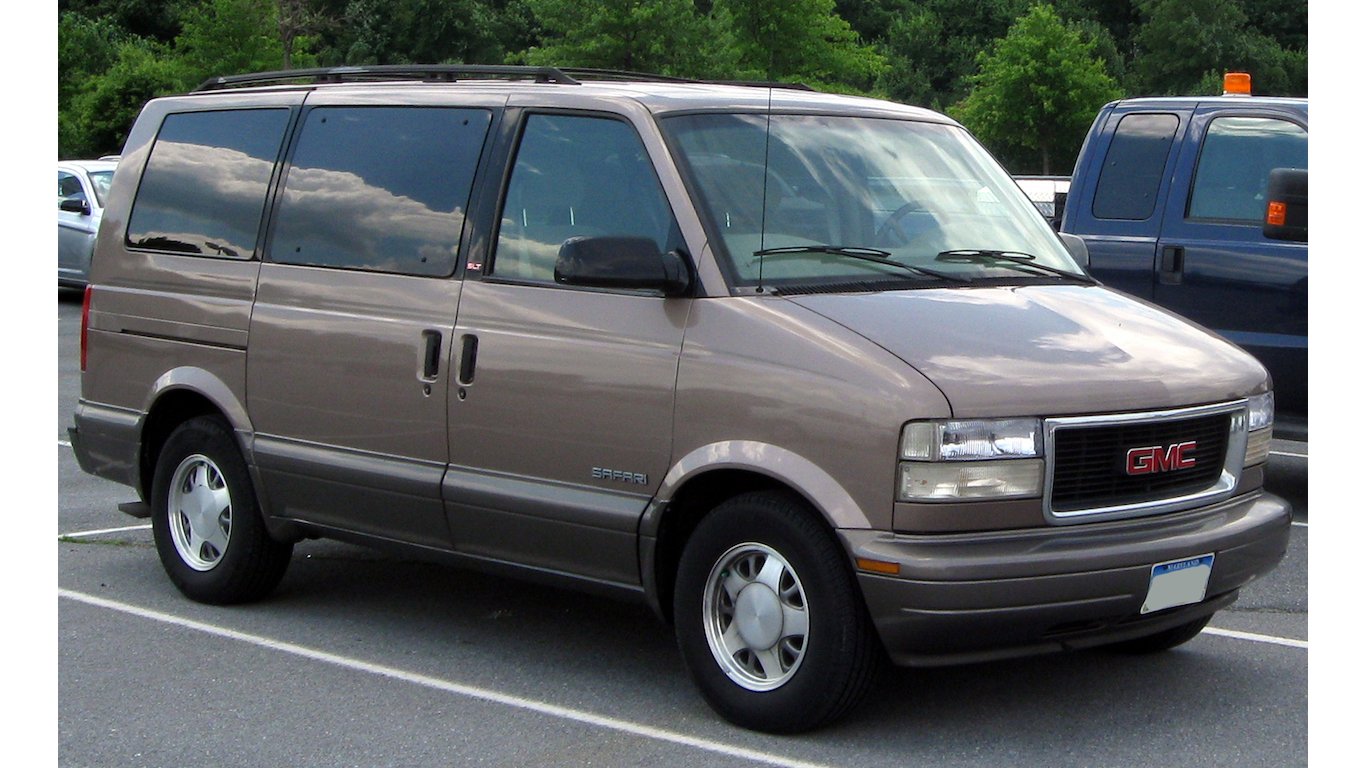
2. 1996-2005 Safari
> Make: GMC
> Poor ratings: Moderate overlap front, head restraints & seats
> Model discontinued: Yes
> Type: Minivan
The GMC Safari — also marketed as the Chevrolet Astro — is one of only two minivans with safety ratings poor enough to make this list. After a decade on the market, the second generation Safari was introduced with the 1996 model year and was manufactured until it was discontinued after the 2005 model year. With a poor rating for its frontal crash impact and headrest safety, the 2005 Safari is one of the least safe cars on the U.S. market.
IIHS test on the minivan indicated that a frontal collision would likely result in serious leg injuries for the driver. While the Safari performed poorly in crash tests, the vehicle had the lowest driver death rate of any popular vehicle between 2002 and 2005. As the Safari is a van, and not a sports car, this may have been influenced by driver habits and use.
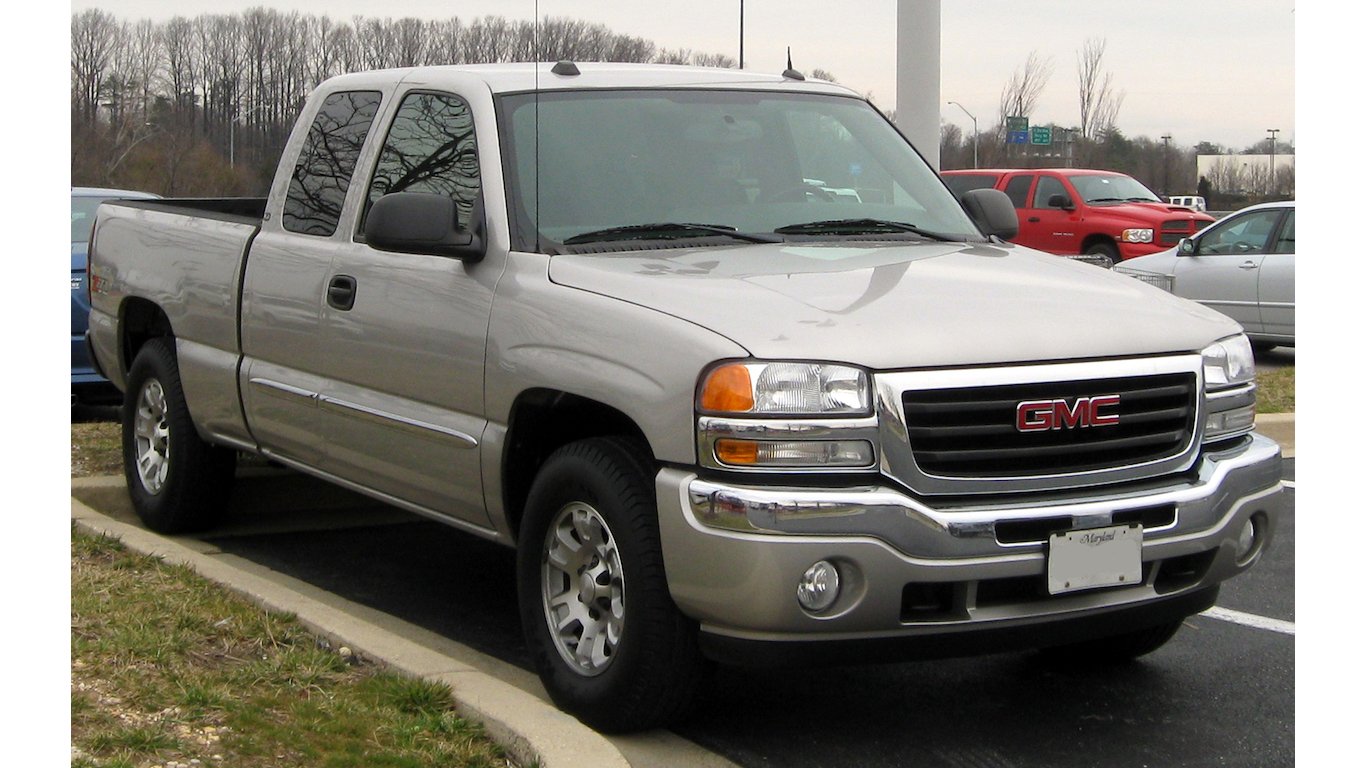
3. 2001-2006 Sierra 1500
> Make: GMC
> Poor ratings: Head restraint & seats
> Model discontinued: No
> Type: Extended cab pickup
Introduced with the 1999 model year, the second generation GMC Sierra 1500 was manufactured through the 2006 edition of the pickup. The second generation extended cab Sierra received a poor rating for its headrests and a marginal rating for its frontal crash impact safety.
While the second generation Sierra 1500 is one of the least safe cars in the country, GMC has made substantial improvements to the model over time. The 2016 Sierra 1500 extended cab received good ratings — the highest possible score — in moderate frontal and side crash impact tests and for its roof strength and headrests.
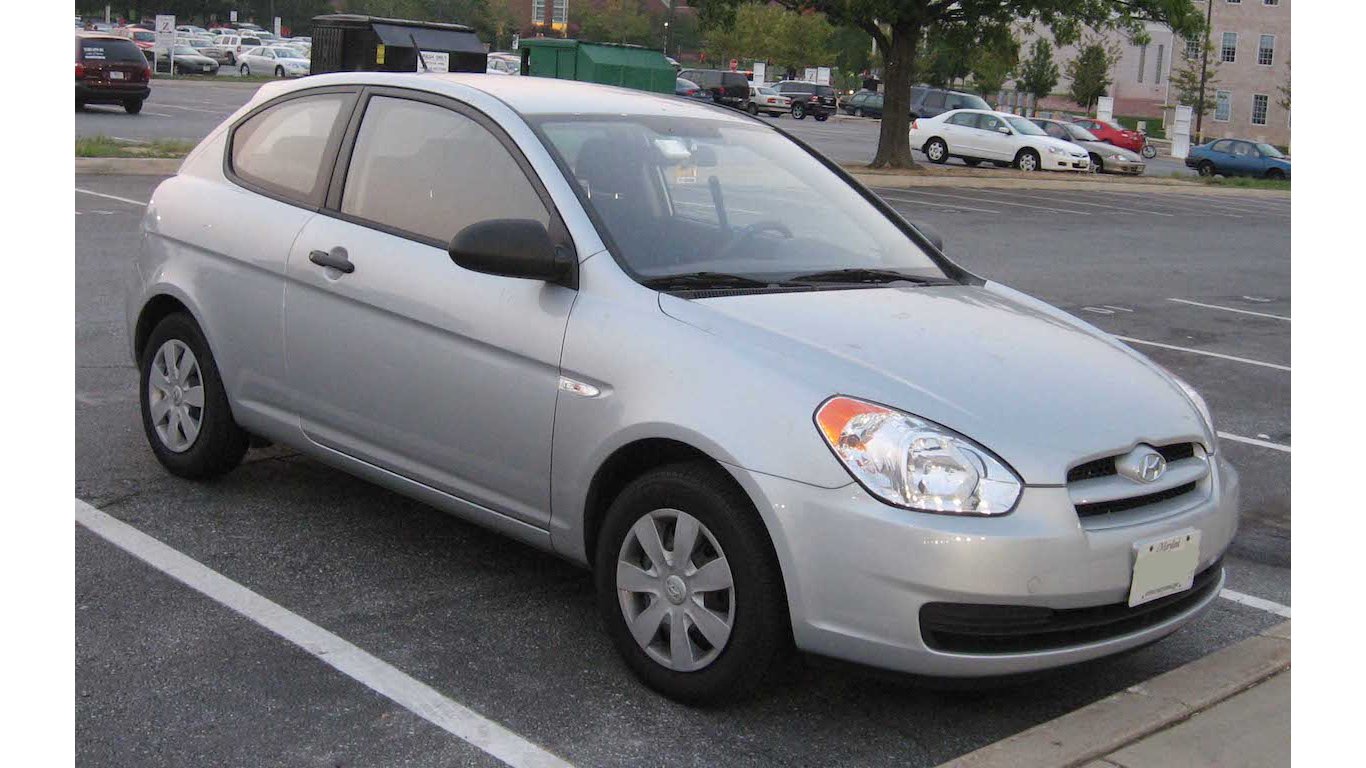
4. 2006-2011 Accent
> Make: Hyundai
> Poor ratings: Side, head restraint & seats
> Model discontinued: No
> Type: Sedan
The third generation of the Hyundai Accent spanned the 2006 version of the car through the 2011 edition. While the third generation Accent was one of the best selling subcompact cars throughout its production run, the car received fairly low safety scores from the IIHS. The 2007 Accent received a poor rating for its side crash impact safety test, revealing a high likelihood of pelvis injury for both the driver and passenger in the event of a side crash. The head restraints and seats also received the lowest rating. The fourth generation Hyundai was introduced in the 2012 model year and was equipped with upgraded safety features. The 2012 Accent received a poor rating for small impact frontal crash safety, and a good or acceptable rating for all other safety aspects.
[in-text-ad]

5. 2001-2005 Optima
> Make: Kia
> Poor ratings: Side, head restraints & seats
> Model discontinued: No
> Type: Sedan
The Kia Optima was the company’s best-selling car in 2015, and also rates as an IIHS top safety pick. The first generation of the Optima, however, was one of the least safe cars on the U.S. market. The first Kia models, produced between the 2001 and 2005 model years, received a poor rating for their side crash impact safety, with the most vulnerability in the driver’s torso and pelvic regions.
The second generation Optima was introduced in the 2006 model year with changes made to the rear door structure for increased safety in side impact crashes. The second generation Optima received an “acceptable” rating in side impact crash safety.
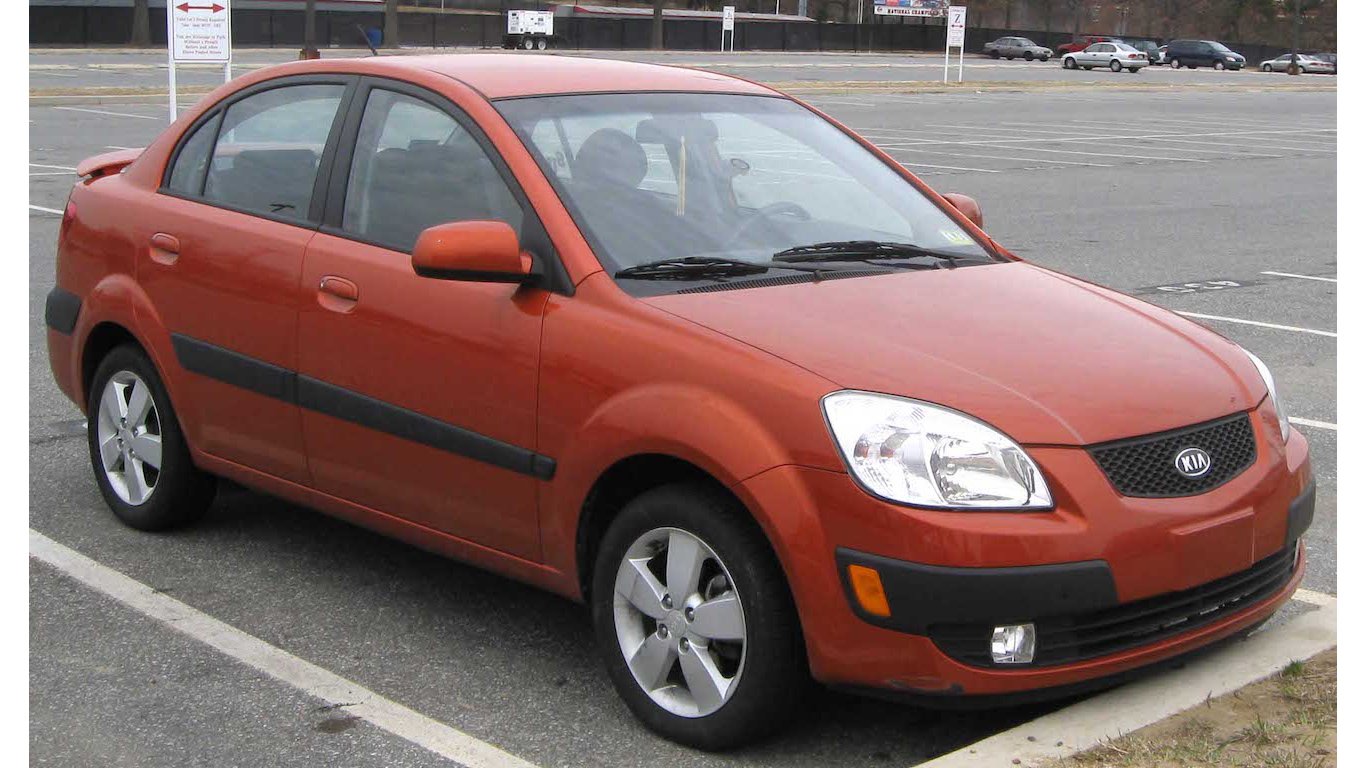
6. 2006-2009 Rio
> Make: Kia
> Poor ratings: Side, head restraint & seats
> Model discontinued: No
> Type: Sedan
The Kia Rio’s second generation was introduced with the 2006 model year and was produced for six years. Like many subcompact cars on this list, the second generation Rio may have sacrificed safety for affordability. The second generation Rio received the lowest possible rating from the IIHS for its side crash impact safety. While the first few second generation model years received poor ratings for their headrests, the 2010 and 2011 models received acceptable ratings. The 2010 model featured redesigns that significantly reduced neck tension in the event of a crash. The third generation Rio began with the 2012 model year and received the highest scores possible on most safety features.
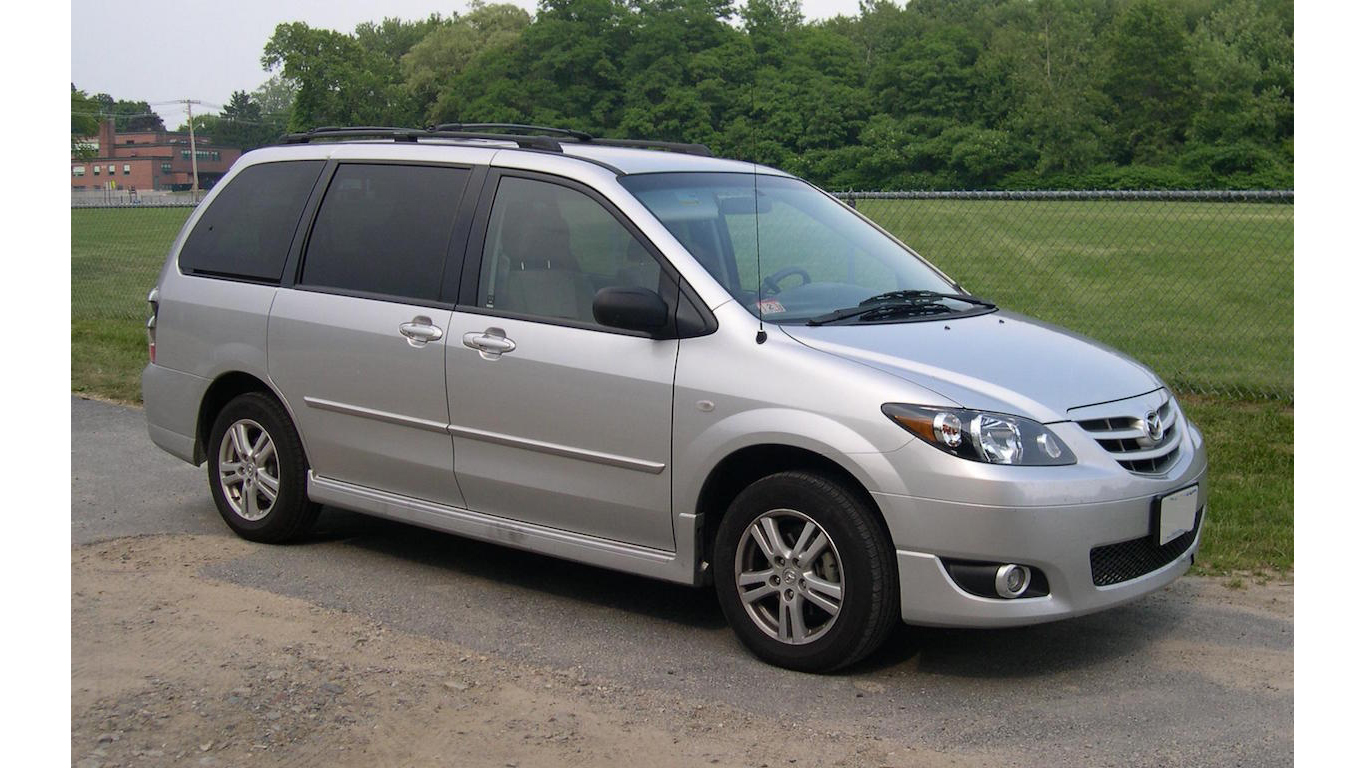
7. 2000-2006 MPV
> Make: Mazda
> Poor ratings: Side, head restraint & seats
> Model discontinued: Yes
> Type: Minivan
The second generation Mazda MPV was introduced in the 2000 model year and was manufactured until its 2007 redesign. One of only two minivans among the least safe cars on the road today, the MPV failed the IIHS side impact and headrest safety tests. Test results indicated that in a side impact crash there would be a high likelihood of rib fracture for the driver and pelvic injury for the passenger. The Mazda MPV was discontinued in North America in 2007, with the safer Mazda CX-9 midsize SUV is sold in its place.
[in-text-ad]
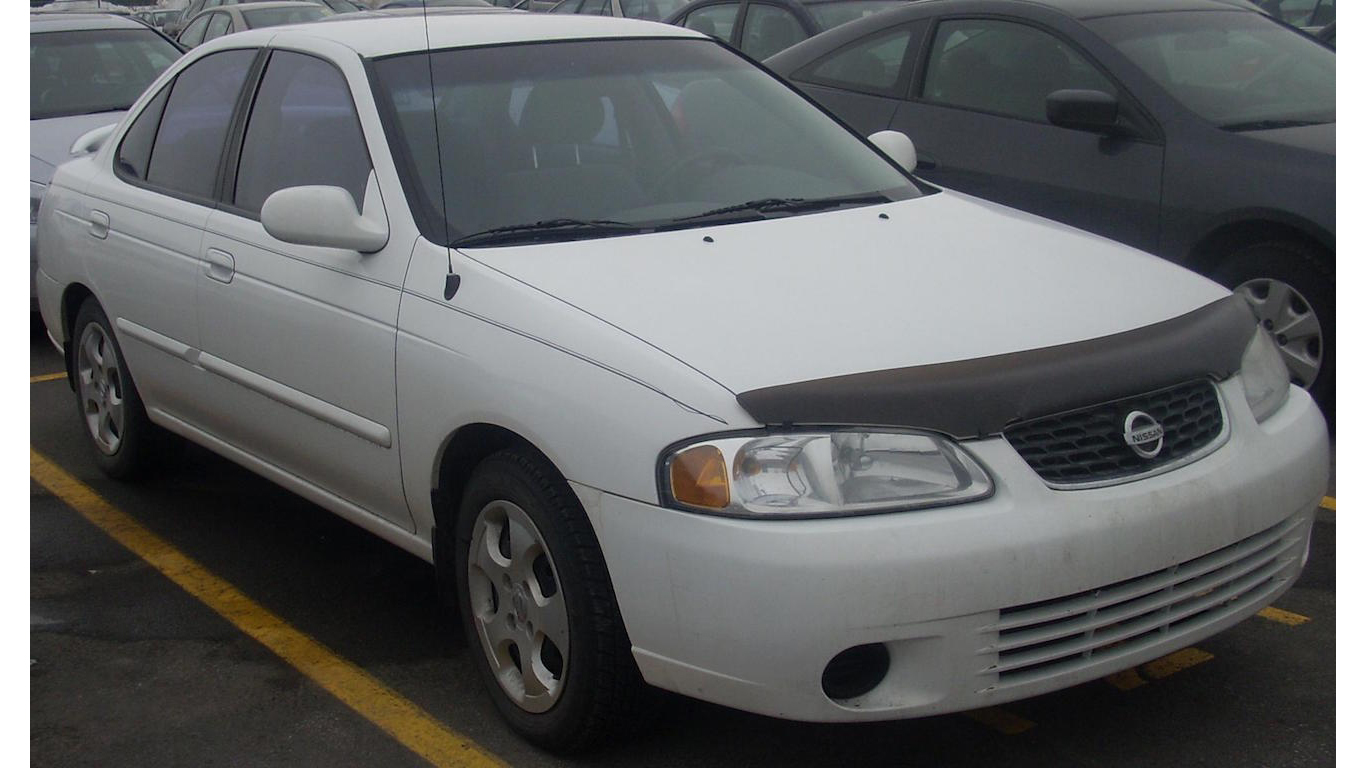
8. 2000-2006 Sentra
> Make: Nissan
> Poor ratings: Side, head restraints & seats
> Model discontinued: No
> Type: Sedan
After four production runs as a subcompact sedan, the Nissan Sentra was redesigned in 2000 as a compact car. The fifth generation Sentra received a poor rating for its side impact crash safety. In a simulated broadside collision, the oncoming car made contact with the driver dummy’s head, and the passenger dummy’s head smashed into the car window, indicating a high likelihood of head injury. The sixth generation Sentra, which was introduced in the 2007 model year, featured notable safety improvements. The car received the highest possible ratings on three out of the four IIHS safety tests.
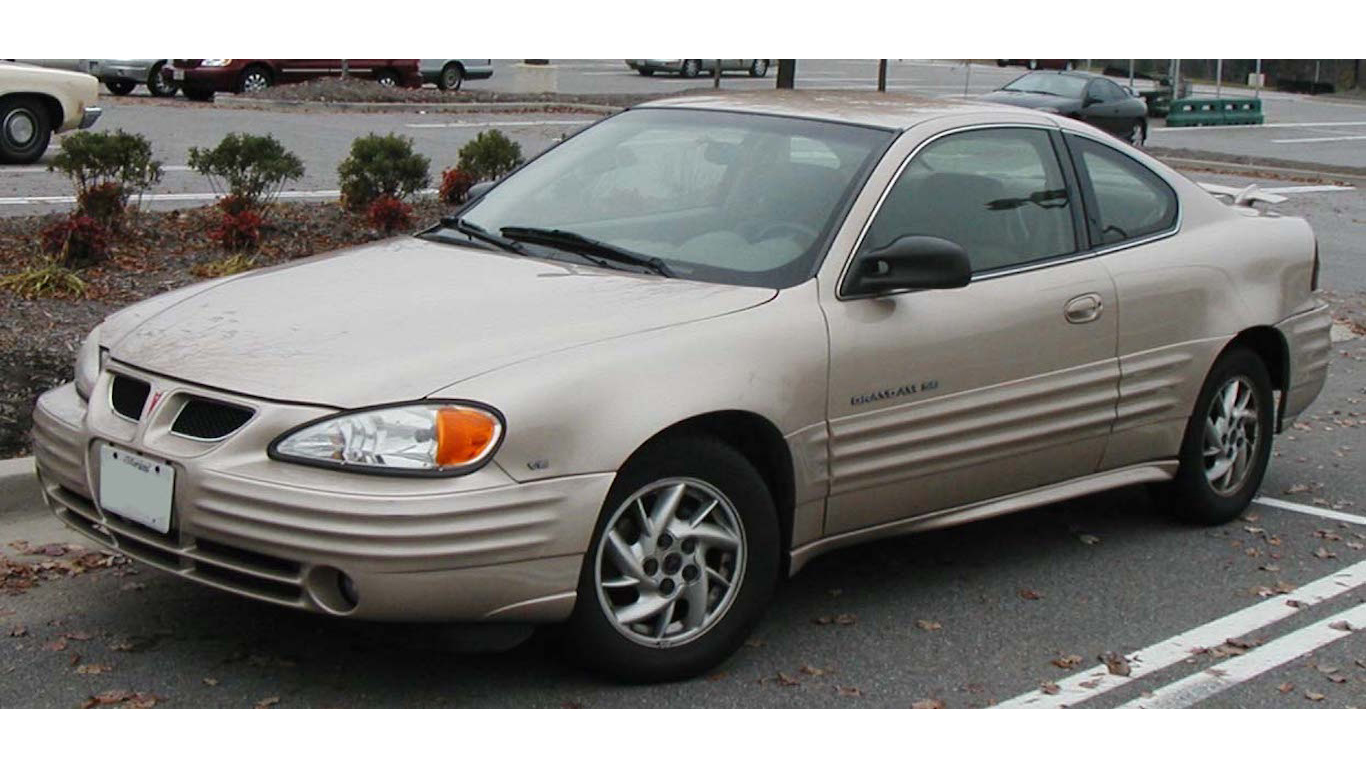
9. 1999-2005 Grand Am
> Make: Pontiac
> Poor ratings: Moderate overlap front, head restraints & seats
> Model discontinued: Yes
> Type: Sedan
After two discontinuations over four separate production runs, the fifth generation Pontiac Grand Am was introduced in the 1999 model year. In an IIHS test, the model received a poor rating for its front impact crash safety. The test revealed a high likelihood of head injury for the driver in the event of a head-on collision. Between 2002 and 2005 there were 160 fifth generation Grand Ams driver deaths per million registered vehicles annually, the most of any midsize 2-door car on the U.S. market at the time, based on data collected by the NHTSA. The Grand Am was discontinued after the 2005 model year, four years before General Motors discontinued the entire Pontiac line.
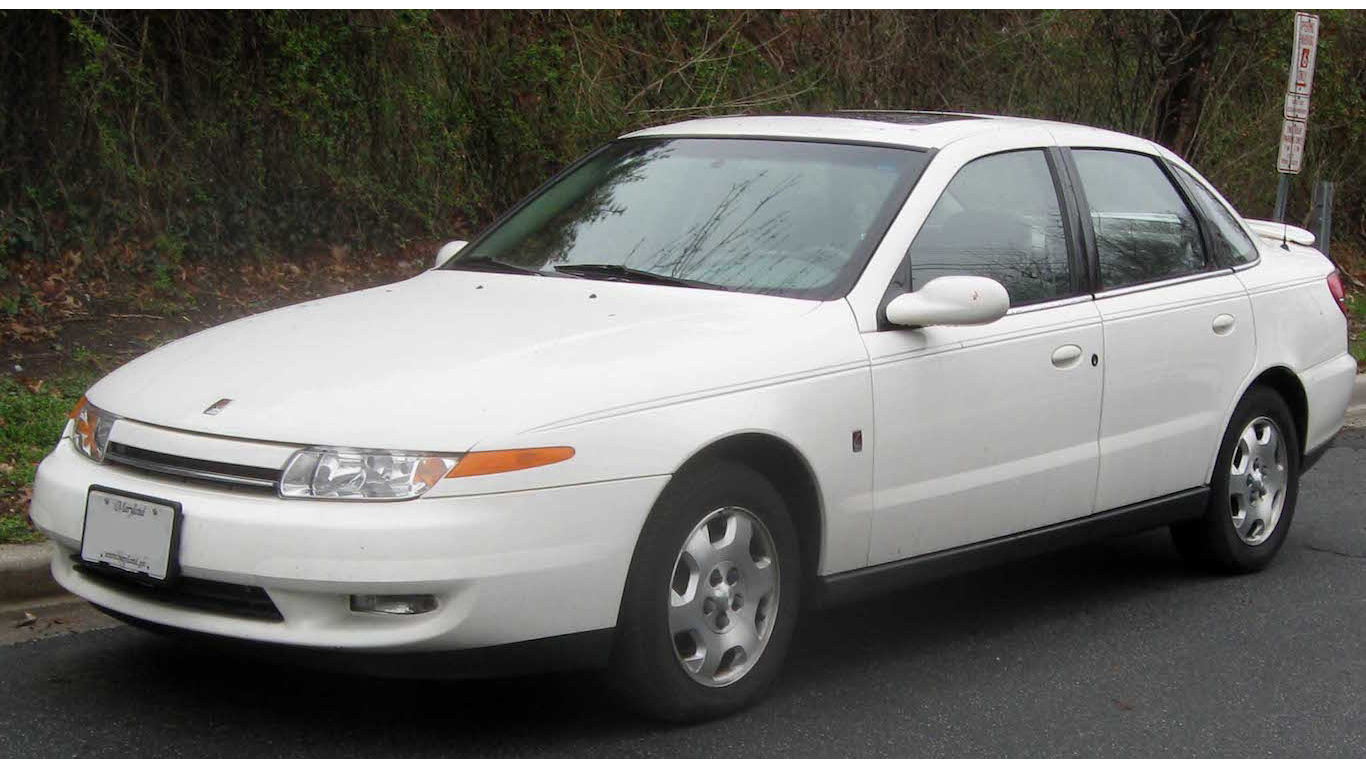
10. 2002-2005 L-Series
> Make: Saturn
> Poor ratings: Side, head restraint & seats
> Model discontinued: Yes
> Type: Sedan
The Saturn L-Series was a line of midsize sedans and station wagons introduced in the 2000 model year. While the L-Series was built to compete with the popular Honda Accord and Toyota Camry, it suffered from poor safety ratings, mechanical problems, and low sales. Any and all of these problems may have led Saturn to ultimately discontinue the model just a few years after its release. The L-Series received a poor rating from the IIHS for its side impact crash safety and headrests. In 2003, General Motors recalled more than 250,000 L-Series models because of an engine defect that could result in fire.
[in-text-ad]

11. 2005-2008 Forenza
> Make: Suzuki
> Poor ratings: Side, head restraints & seats
> Model discontinued: Yes
> Type: Sedan
After collaborating with General Motors to jointly purchase bankrupt Japanese automaker Daewoo Motors, Suzuki rebranded the Daewoo Lacetti as the Suzuki Forenza for the 2004 model year. Soon after the deal, however, Suzuki executives expressed disappointment in the quality of Daewoo cars — and the Forenza in particular. In an IIHS crash test, the Forenza received the lowest possible rating for its side impact crash safety, citing a high likelihood of pelvic fracture to the driver and brain injury to the passenger in the event of a broadside collision. The Forenza was discontinued after the 2008 model year.
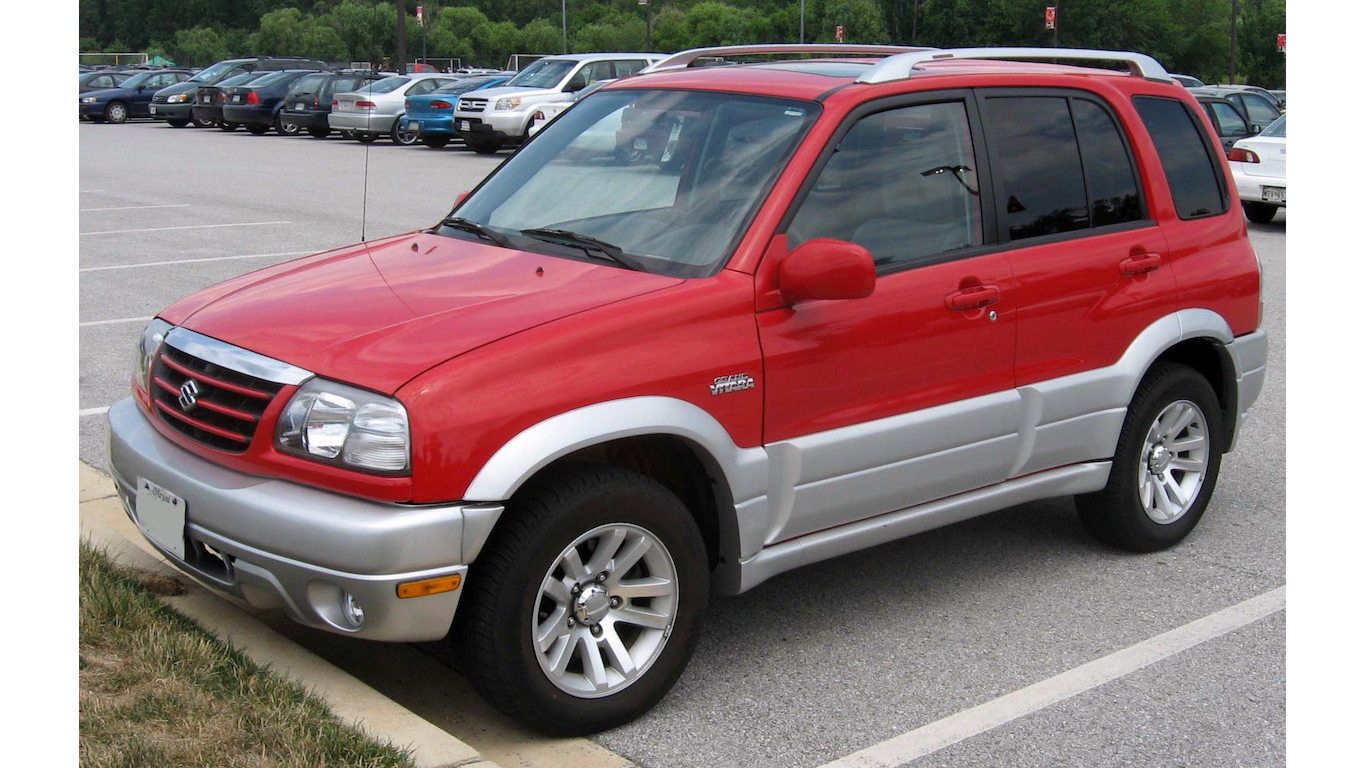
12. 2003-2005 Grand Vitara
> Make: Suzuki
> Poor ratings: Side, head restraints & seats
> Model discontinued: No
> Type: SUV
The Suzuki Grand Vitara is the only SUV among the least safe cars on the U.S. market. The second generation Grand Vitara, which was introduced to the U.S. market in the 1999 model year, received a poor rating for its side impact crash safety in an IIHS safety evaluation. The test revealed a high likelihood of skull fracture or serious next injury for the driver in the event of a broadside collision. The Grand Vitara also failed to meet the IIHS standard for headrest design. The car was redesigned for the 2006 model year with upgraded safety features and received better scores in all aspects of crash safety.
Methodology
To determine the most dangerous cars on the road, 24/7 Wall St. reviewed crash test ratings conducted by the Insurance Institute for Highway Safety, a nonprofit highway safety research organization, funded by automobile insurance companies, with the mission of reducing crashes and the resulting injuries, deaths, and property damage. To be considered as one of the most dangerous cars, a vehicle needed to receive either a “marginal” or “poor” rating — the second-lowest and lowest ratings — in either the moderate overlap frontal crash test or the side crash test. In addition, a car needed to receive a poor rating in at least one of the other two categories — roof strength, and head restraints and seats. We only considered vehicles generations for which a 2005 model or later was built. For each vehicle, we noted a model as discontinued if the manufacturer stopped producing the car in United States for at least one year. In the case of the GMC Sierra 1500, two versions of the model met the standards — the 2001-2006 Sierra 1500 extended cab and the 2007 Sierra 1500 Classic. Similarly, we excluded the Dodge Neon SRT which would have made the cut, from our list, as it has the same body type as the Dodge Neon. It should be noted that the IIHS does not test all commercially-available car models, and it is possible that other cars would make this list if it did. Production runs of a model are typically rated the same, as manufacturers usually do not make major structural changes to the car over the course of a generation. For this reason, we typically listed all the years of the generation that makes our list. There are exceptions, however, when a small change or a new test changes a vehicle’s rating. For example, while the Saturn L-Series made the list from the 2000 model year through the 2005 year, we only count L-Series for the 2002 through 2005 years, as the side impact test was not conducted for the 2000 or 2001 years. Similarly, the generation of the Suzuki Forenza to fail ran from the 2004 through 2008 model years, but only the 2005 models had enough tests to meet our standards. Model-specific fatality data came from the National Highway Transportation Safety Administration.
Ever wanted an extra set of eyes on an investment you’re considering? Now you can speak with up to 3 financial experts in your area for FREE. By simply
clicking here you can begin to match with financial professionals who can help guide you through the financial decisions you’re making. And the best part? The first conversation with them is free.
Click here to match with up to 3 financial pros who would be excited to help you make financial decisions.
Thank you for reading! Have some feedback for us?
Contact the 24/7 Wall St. editorial team.